Smooth oxeye (
Heliopsis helianthoides) is a common, medium-size perennial available from many traditional and native-plant nurseries. If you have enough space for this robust plant, it is a great candidate for a prairie planting, large perennial garden or sunny woodland edge. The large mass of bright yellow, daisy-like flowers presented on each plant will delight you. And the pollinators will be happy too — prepare to see a flurry of winged activity throughout the summer on the flowers.
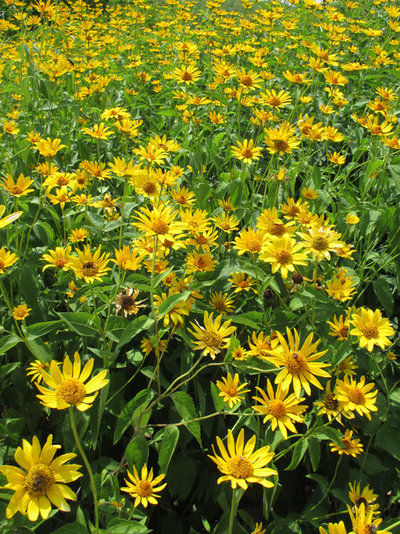
Holm Design & Consulting LLC
Botanical name: Heliopsis helianthoidesCommon names: Smooth oxeye, false sunflower, oxeye sunflower, sunflower heliopsis
Origin: Occurs in eastern North America from North Dakota east to Pennsylvania in the north and New Mexico east to Georgia in the south; in Canada occurs from Saskatchewan east to Quebec
Where it will grow: Hardy to -45 degrees Fahrenheit (USDA zones 2b to 7a; find your zone)
Typical plant communities: Dry to mesic prairies, old fields, roadsides and woodland edges
Soil requirement: Dry to medium, sandy-loam to clay-loam soil
Light requirement: Partial sun to full sun
Mature size: 24 to 60 inches tall and 18 to 36 inches wide
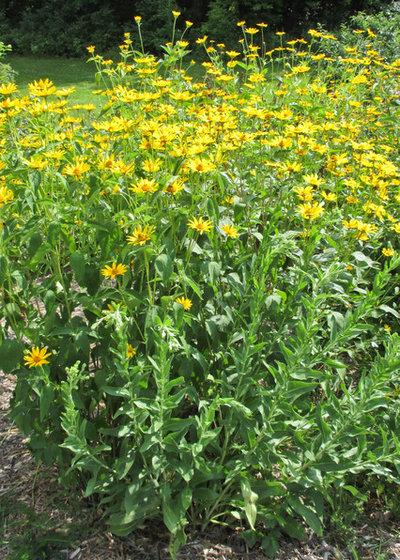
Holm Design & Consulting LLC
Benefits and tolerances: Tolerates well-drained soil
Seasonal interest: Bright yellow daisy-like flowers develop in late June or early July; has a sturdy, upright form and long-lasting flowers that provide color for several months
When to plant: Spring or fall; potted plants are available from most native-plant nurseries in areas where it occurs
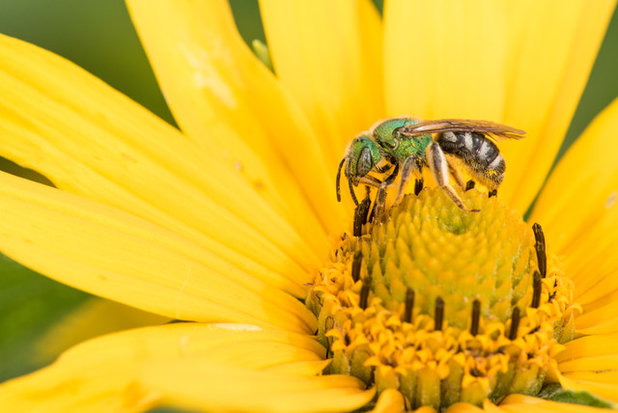
Holm Design & Consulting LLC
Distinguishing traits. Smooth oxeye has an upright form, a bushy habit and large, bright yellow flowers.
How to use it. This robust native perennial can be used in large perennial gardens, along a sunny woodland edge or naturalized in a prairie planting.
Combine smooth oxeye with other summer-flowering native perennials, including hoary vervain (
Verbena stricta), butterfly milkweed (
Asclepias tuberosa) and wild bergamot (
Monarda fistulosa).
Shown: Female metallic green sweat bee (
Agapostemon virescens)
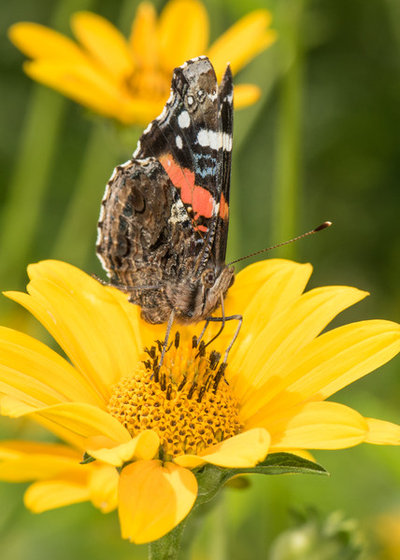
Holm Design & Consulting LLC
Planting notes. Space smooth oxeye plants at least 30 inches apart. Plant at least five to seven plants together to create a large color block in a perennial garden. Mature plants can be divided in the fall and redistributed.
If stressed, smooth oxeye can be afflicted by aphids, which will cover the flower stems. Provide a pesticide-free garden and a diversity of native plants that will attract insects that prey on aphids, including lacewings, syrphid flies and ladybird beetles.
Shown: Red admiral butterfly (
Vanessa atalanta)
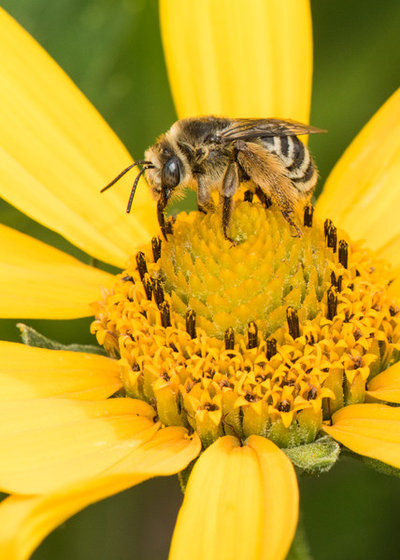
Holm Design & Consulting LLC
Pollinator notes. This is often one of the first flowers I see long-horned bees (
Melissodes spp.) foraging on after they emerge as adults from their nests. In addition to the long-horned bees, the flowers attract a number of different bees, including bumblebees (
Bombus spp.), metallic green sweat bees (
Agapostemon spp.) and leafcutter bees (
Megachile spp.). Butterflies and flies also commonly visit the flowers.
Both the outer ray florets and inner disc florets are fertile and produce seed. These florets start their development from the outside inward. Female bees collecting pollen circle around the flower over the newest flowers, which present pollen first.
Shown: Female long-horned bee (
Melissodes sp.)





